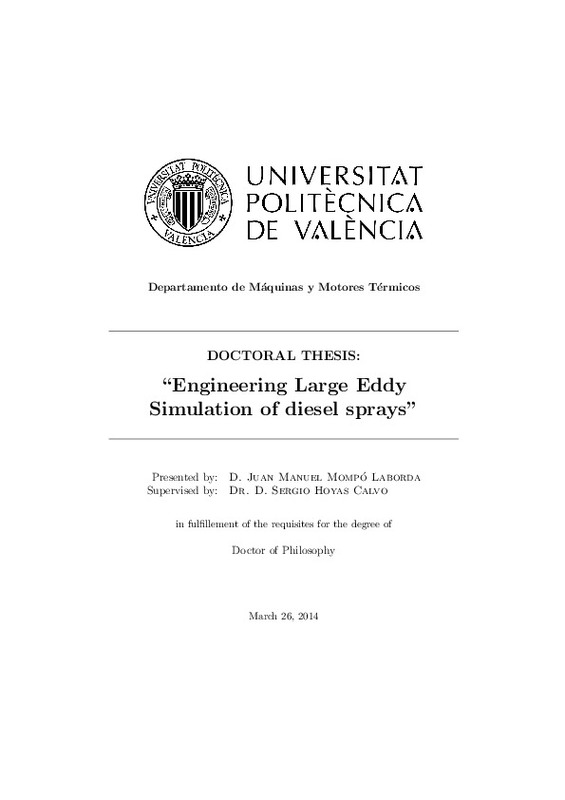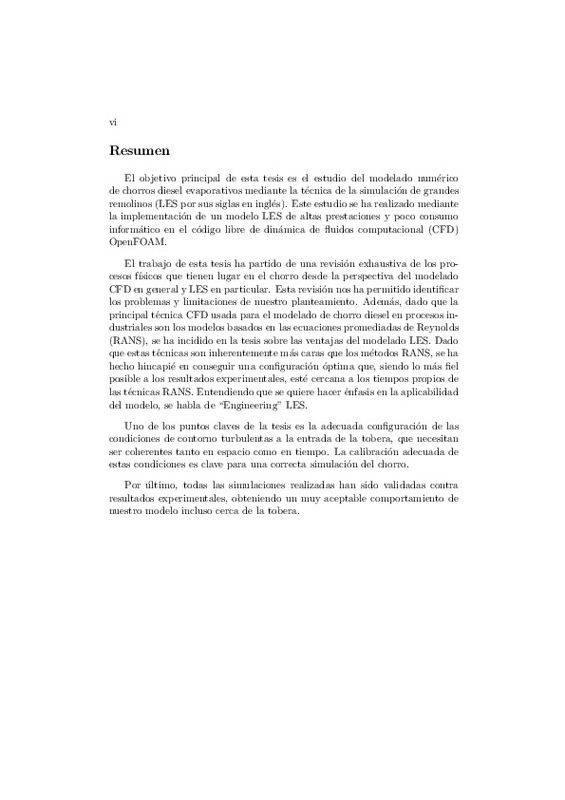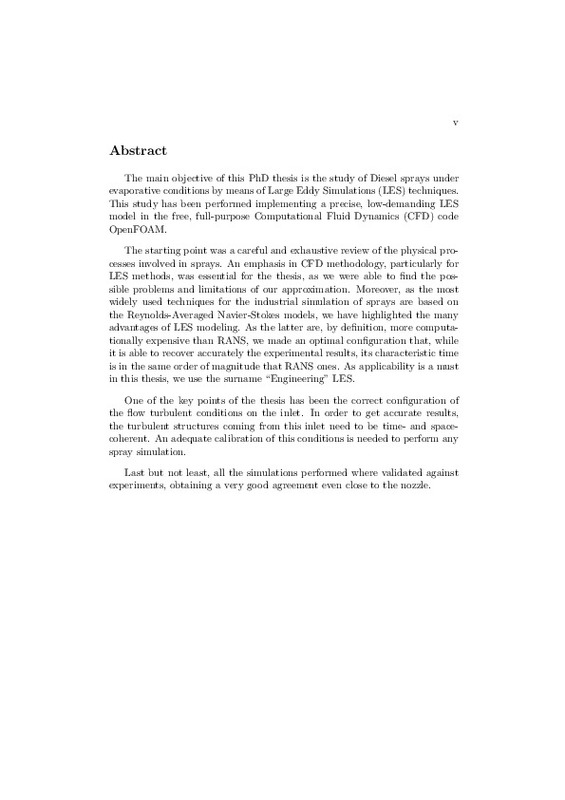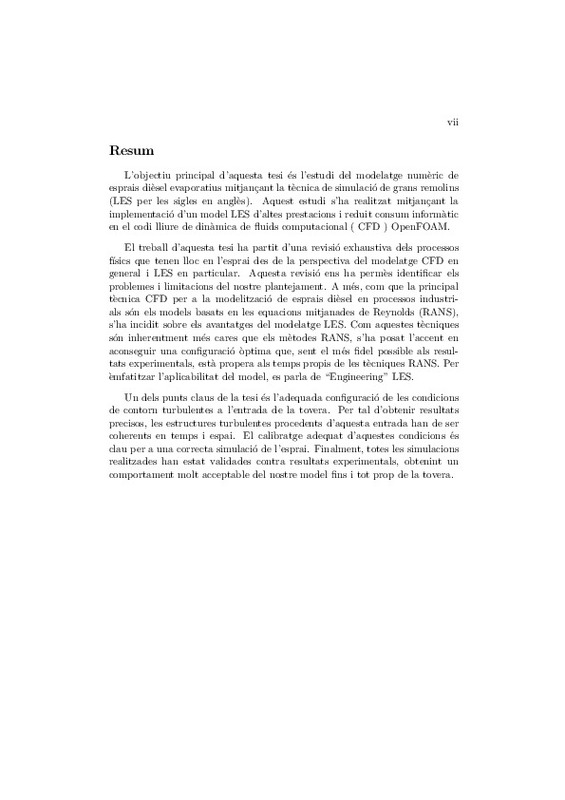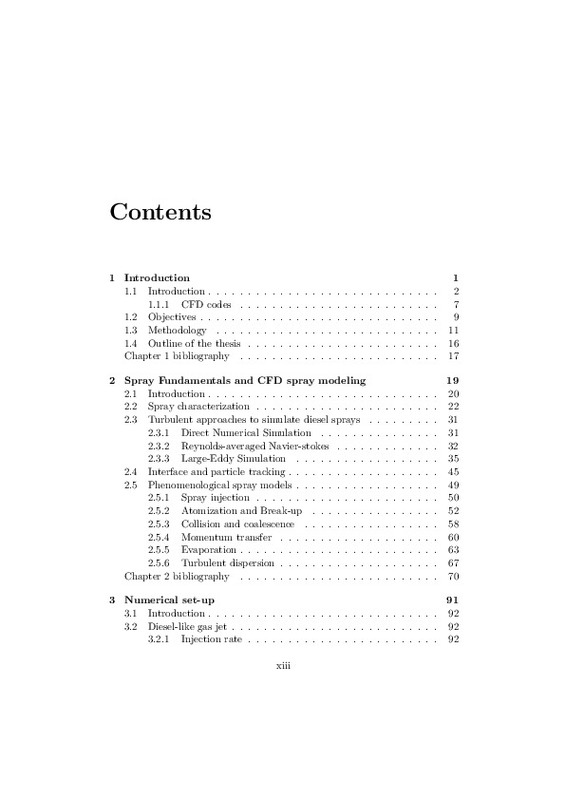- RiuNet repositorio UPV
- :
- Investigación
- :
- Tesis doctorales
- :
- Ver ítem
JavaScript is disabled for your browser. Some features of this site may not work without it.
Buscar en RiuNet
Listar
Mi cuenta
Estadísticas
Ayuda RiuNet
Admin. UPV
Engineering Large Eddy Simulation of Diesel Sprays
Mostrar el registro completo del ítem
Mompó Laborda, JM. (2014). Engineering Large Eddy Simulation of Diesel Sprays [Tesis doctoral]. Universitat Politècnica de València. https://doi.org/10.4995/Thesis/10251/37345
Por favor, use este identificador para citar o enlazar este ítem: http://hdl.handle.net/10251/37345
Ficheros en el ítem
Metadatos del ítem
| Título: | Engineering Large Eddy Simulation of Diesel Sprays | |||
| Autor: | Mompó Laborda, Juan Manuel | |||
| Director(es): | ||||
| Entidad UPV: |
|
|||
| Fecha acto/lectura: |
|
|||
| Resumen: |
The main objective of this PhD thesis is the study of Diesel sprays under
evaporative conditions by means of Large Eddy Simulations (LES) techniques.
This study has been performed implementing a precise, low-demanding ...[+]
|
|||
| Palabras clave: |
|
|||
| Derechos de uso: | Reserva de todos los derechos | |||
| DOI: |
|
|||
| Editorial: |
|
|||
| Tipo: |
|
recommendations
Este ítem aparece en la(s) siguiente(s) colección(ones)
-
Tesis doctorales [5389]






